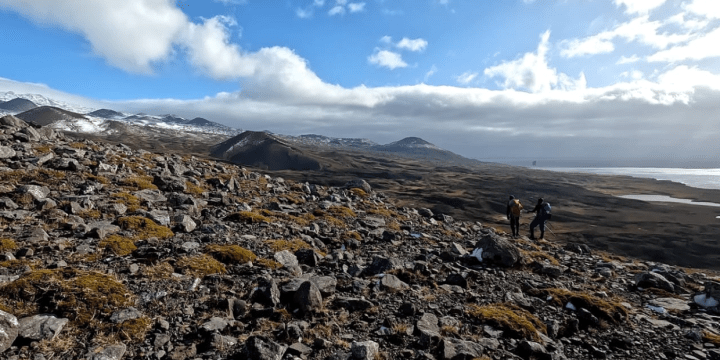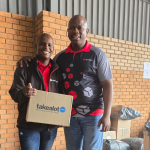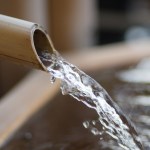SPONSORED CONTENT
Microbial guardians of Marion Island: Unveiling the hidden world in Sub-Antarctic soils amidst climate change challenges

Despite the harsh climate, characterised by low temperatures and strong winds, the varied landscapes on Marion Island host ecologically diverse flora and fauna.
Prior to the establishment of a weather station on the island, early studies focused on studying the diversity of plants and animals. These studies revealed several distinct varieties of plants and animals with surprisingly high species diversity. This comparatively high diversity is somewhat surprising given the fact that the extreme conditions typically result in depauperate ecosystems, due to the limitations imposed by the harsh conditions on life. Even before its annexation by South Africa in 1948, a seminal year in the history of the republic, Marion had been the subject of extensive studies. These studies suggest, for instance, that the unique evolutionary history of the island results in higher-than-expected levels of indigenous plants.
Scientific surveys of the so-called charismatic macrofauna suggest equally high levels of diversity. The approximately 2 million seabirds, including 4 species of albatrosses, several species of penguins, albatrosses, and prions is remarkably high for a 298 square kilometre sub-Antarctic Island. However, due largely to the uncontrolled increase in the population of non-native mice, several of these species are critically endangered. As a result, various large-scale efforts aimed at eradication have been established on the island.
Climate change is an additional burden on Marion Island biology. For example, several recent studies have shown that climate change is likely to lead to higher mice densities, due to the favourable warmer and drier climate. Together, studies on plants and animals, principally led by South African scientists, have considerably advanced our understanding of the ecology and evolution of biology on Marion Island. However, surprisingly less is known regarding microbes including bacteria, archaea, fungi, and viruses on Marion Island or potential feedback on climate change in sub-Antarctic Island soils.
Soil microbes provide important ecosystem services and support plants and animals on the island. These microbes, which constitute important biological communities, recycle nutrients such as carbon by breaking down organic matter. Several bacterial species directly contribute to plant nutrient acquisition on Marion Island, through nitrogen recycling. Consistent with studies on plants and animals, the soils on Marion have been shown to harbour a relatively high microbial diversity. These microbes form the basis of food webs in sub-Antarctic environments, but surprisingly little is known regarding their precise roles in Marion Island soils.
Previous studies on soil microorganisms have shown their capacity to adapt to extreme environments. Physicochemical variables including extreme fluctuations in temperature and pH, high salinity and other conditions impose severe limitations on microbial functional processes. The capacity to adapt to environmental conditions may provide a useful proxy for evaluating the effects of climate change on Marion soil biodiversity. In addition, there is some evidence that understanding extreme environments, such as those found in Marion Island soils, may reveal novel antibiotics and other bioactive compounds.
Researchers at the Department of Microbiology and the School for Data Science and Computational Thinking at Stellenbosch University have recently initiated a series of projects aimed at investigating the diversity of Marion Island soils. These studies focused on cataloguing the diversity and function of microbial communities in these soils. The overarching goal is to understand the mechanisms used by microbial communities on Marion to circumvent extreme conditions. For example, Mr. Phillip Mawire, a doctoral student, has started working on understanding the mechanisms which allow some bacteria to grow in extreme environments such as Antarctica. He has collected soils and characterised physicochemical variables to investigate the effects on Marion Island microbial communities. Other studies in the group have focused on elucidating viruses in Marion Island soils, to assess the effects of environmental change on their evolution.
Although these studies seem relatively straightforward, there are several methodological and technical challenges. For example, the logistical constraints linked to sampling soils on Marion present a major challenge. Sampling in these geographically varied, wet and cold soils, which have only recently been classified based on established criteria, is a major undertaking and requires large teams of researchers. Because microbial communities are known to vary considerably based on local and regional scales, it is likely that these soils may support millions or billions of microbes. These interacting, numerically abundant microorganisms, are likely to be influenced substantially by local variability on the island.
While the effort to characterise these soils is daunting, it is crucial for conservation efforts and for mitigating the increased threats due to climate change. Investigating ecosystem services provided by microbial communities in Marion Island soils, is crucial for predicting the effects of climate change on the island. For example, there is strong evidence that these soils may harbour several uncharacterized viruses but the effects of climate change on these viruses remains unclear. Climate change and concomitant shifts in temperature and precipitation are expected to affect animals and plants. For example, on Marion Island these shifts may lead to increases in vector-borne and zoonotic diseases. Studies on microbial communities may help us predict and understand the emergence of such pathogens, which is essential for conservation efforts and for maintaining the diverse plants and animals inhabiting the island. DM
Author: Thulani Makhalanyane, Professor in the Department of Microbiology and the School for Data Science and Computational Thinking, Stellenbosch University

About the author:
Thulani Makhalanyane is a Professor in the Department of Microbiology and the School for Data Science and Computational Thinking at Stellenbosch University. He earned his Ph.D. at the University of the Western Cape in 2013 and his research focuses on understanding the ecology of microbial communities in extreme environments. He has co-authored over 85 publications in leading journals including Nature, Science, PNAS and The ISME Journal. Thulani serves on several editorial boards and currently serves as Editor in Chief for Reviews and Perspectives of The ISME Journal and Senior Editor at mSystems. He also serves on national and international panels representing South Africa in bilateral discussions. Thulani was elected to the board of the ISME Society in October 2018. He is the Director of ISME’s Ambassador Program and is a member of the Executive Advisory Board.

















 Become an Insider
Become an Insider